

Kallianpur Catholics Rejoice; but, what next
By Philip Mudartha
Bellevision Media Network
Udupi, 22 Jul 2012: The Roman Catholic Church hierarchy announced this Monday their decision to erect a new ecclesiastic diocese consisting of territories of civil district of Udupi in Karnataka State. The Udupi diocese with Church of Our Lady of Miracles at Kallianpur-Milagres as its Cathedral will administer five deaneries of Kundapur, Kallianpur, Udupi, Shirva, and Karkala consisting of 46 parishes and an assortment of religious, educational and associated socio-cultural entities.
Long awaited dream came true.
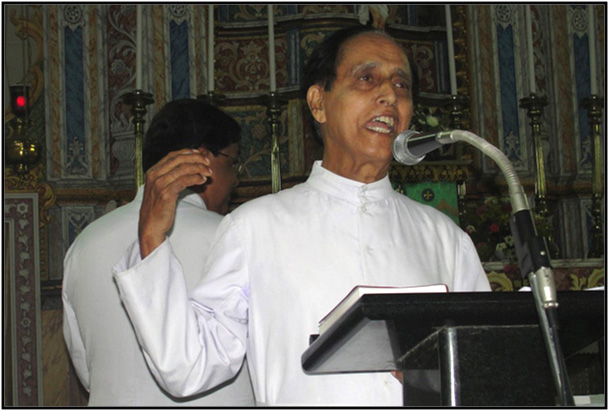
The announcement was met with surprise, jubilation and wide acceptance. Clergy, laity and media described the decision as “Long awaited dream finally came true”. Implicit was that this should have taken place decades ago. It was stated that the new diocese with its new leadership will fast track the process of realization of its dormant potential and achieve faster growth in meeting community expectations, both pastoral and secular. This was explicit acceptance that the region was neglected. This allegation was whispered in private even by clergy and written about by laity in Konkani print media for more than two decades.
The announcement met with a few voices of dissent which were drowned out in flood of instantaneous chorus of salutations, congratulations, promise of support and prayers and praise for the incoming first Bishop. These emotions will cool sooner than later. Rejoice today, Kallianpur Catholics; tomorrow is time for reality check. What next?
Statistics, fact sheet and potential

The diocese counts 1.07 lakh registered Catholics of Latin Rite. The total district population is 11.8 lakhs. At 9%, it is comparable to the undivided diocese. However, they are spread out on bigger territory with density of only 30 Catholics per sq.km and average 2326 parishioners per parish. The numbers for downsized Mangalore are 41 Catholics per sq.km and average 1832 parishioners per parish. Data Analysis should bring forth short term and long term solutions beginning with continuation of ‘reach out programs’ at ward level. This requires youthful, mobile and full-time pastors who take the church to households. Until smaller parishes are erected and manned, the definition of church will have to change from a physical structure of a building at parish center to living community of the faithful.
Is small beautiful?
That the Mangalore diocese is large and unwieldy was acknowledged long ago. But bifurcation demand did pick up steam a decade ago, when the civil district of Udupi was created. Activist Benedict Noronha has repeated his old written demand when Shimoga diocese was erected in 2000. Konkani Writers of local origin have spoken about step-motherly treatment. The inaccessibility of Bishop and his in-attention to individuals from distant parishes were grievances, aired mostly in parlor chats but sometimes in independent media. Recently, Fr. Denis Castelino, a secular priest of Belle origin, forcefully articulated in his article on Kittall, how the step-motherly treatment has deprived the region of possibilities of benefiting from the diocesan resources and enterprises, chiefly in the professional educational field. That School & College of Nursing, Medical and Engineering Colleges, Higher & Vocational Schools & Colleges, Health-Care Institutions, Pastoral Centers and many a secular social institutions availing constitutional concessions reserved for religious minorities were all based in the Urban Mangalore, depriving Udupi region of their equitable share. The argument in favor of smaller diocesan entity, administered by committed clergy leadership of local origin seemed sensible. The full text available at www.kittall.com appeared to me like a no-holds-barred revolt against the diocesan leadership shortcomings including self-centered control regimen of a handful of ageing top clergy.
That a diocese boasting of providing 40 or more bishops/archbishops to rest of India, and heads of educational and religious institutions in hundreds, had a reign by two men for 55 years aptly sums up silent frustrations of diocesan clergy. The control freak system in place rewards the yes-men, reserving punishment postings to the bold. However, times do change. The silent pressure tactics of bold clergy, the open revolt as described above, the mounting work-load and possibly dis-approval ratings of diocesan leadership performance have brought about the long overdue erection of Udupi Diocese.
Moving forward towards results
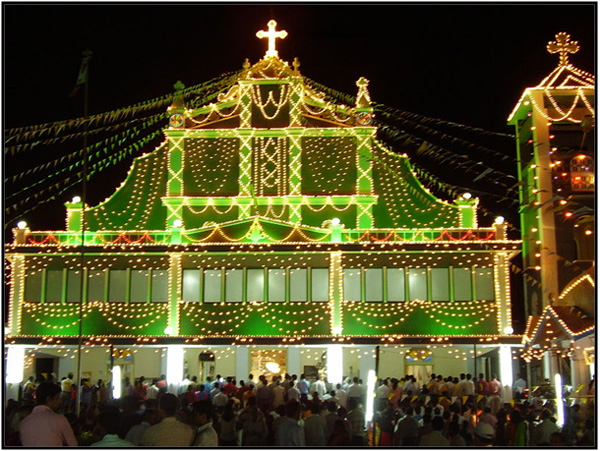
There are claims tracing origin of Christianity in Kallianpur to St. Bartholomew, one of the twelve disciples of Jesus. However, scholastic evidence does not exist. Church records support the view that St. Milagres Church was built at around the same time Rosario Cathedral was built in Mangalore. Like Rosario, this church was also destroyed by Tipu Sultan’s forces during Canara Bandhadd in 1774. It was rebuilt in 1806 by those captives who survived and returned. This has been the mother church for Udupi among others. Therefore, the choice of Kallianpur as the seat of new diocese is apt. It would be appropriate to christen the diocese accordingly, as Kallianpur diocese, thus not linking it with the headquarters of the district civil administration.
The existence of St. Mary’s Syrian Cathedral in Brahmavar, which is not too far from our new Cathedral, is not known to many Catholics. My own awareness about it and Schismatic Community came during my college days in Udupi. Later, I made friends among both RC and SC. I attended weddings and Sunday services in both Syrian Cathedral and Church of Holy Family. While stories vary, this schism arose out of the Padroado Propaganda Controversy of 1856 and subsequent Concordat of 1886. The schismatic story sustains its hatred of RC by recalling the insulting words from papal office that called them “some drunkards and troublemakers from Kalliyanpuri”. The RC of course has a different story.
The mention of Schism is made here to recall that Kallianpur has a proud tradition and rebelled to preserve their self-respect. Self-respect like most human emotions is sentimental affair. Managing sentiments are as important as reasoning, logic and arithmetic.
What is true for 1856, 1886 is also true for 2012 and beyond. The leadership of our new diocese will have to account for local sensibilities while transiting from existing one jurisdiction to the other. The restructuring since 1887 may not have resulted in breaking away from the church, but there have been violent demonstrations against installing Konkani speaking Bishops both in Shimoga and Bangalore, which were subdued with help from state law and order machinery. Police were involved in internal affairs of the religious flock. Disobedience to these bishops by ethnic priests in both dioceses is known in private chats and secular print media. Such situation may not occur in this case, because of the binding bond of Konkani language. Yet, a Canada based Vincie Rodrigues from Thottam says bluntly: “…Would the clergy being in charge in Udupi region as of July 16, 2012 automatically belong to the new Diocese? I would imagine the Bishops can amicably decide on that issue. Primary objective is to serve God by serving the respective faithful of the region. Humility and Obedience will be at test….and the wonderful Diocese of Mangalore support us with all its rich resources that have been well contributed by Udupi region. Holy Spirit will most wonderfully guide and inspire our Leadership...”
According to Kuwait based Lawrence Saldhana, “it is a fact that due to the large geographical size of the undivided Diocese and lack of competent and visionary leadership reaching out to distant corners of underdeveloped areas, most of the focus was concentrated on Urban Mangalore and surrounding parishes. Karkala Deanery is the classic example of negligence despite being high revenue earning pilgrimage center in Attur”. His hope is the bifurcation and the appointment of new Bishop will usher in rapid development for the neglected areas.
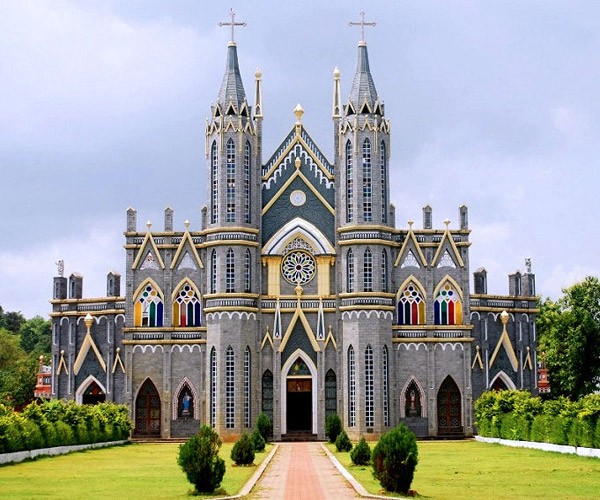
“Money is not everything”, ominously says Benedict Noronha of Udupi, “there is no dearth of money for God’s work”. Financial and human resources are not a problem. Catholics of the region both laity and clergy are historically brilliant and highly accomplished, says Fr. Denis Castelino, pleased with the event. He goes on to list number of high achievers of the region. His advocacy that formation of independent diocese is a cure-all magic wand to fast forward the secular progress of Catholics of the region is ill-founded. However, a radical change in laity-clergy relationship towards mutual trust and allowing greater participation of laity in founding, running and controlling institutions would be the right beginning. A visible example of the concept can be seen in the appointment of laity dean, principal and teachers for St. Lawrence College of Arts & Commerce at Moodubelle. This model will only be effective if the clergy correspondent devolves a degree of autonomy in functional decision making to the laity leadership he has appointed.
The blossoming of laity leadership
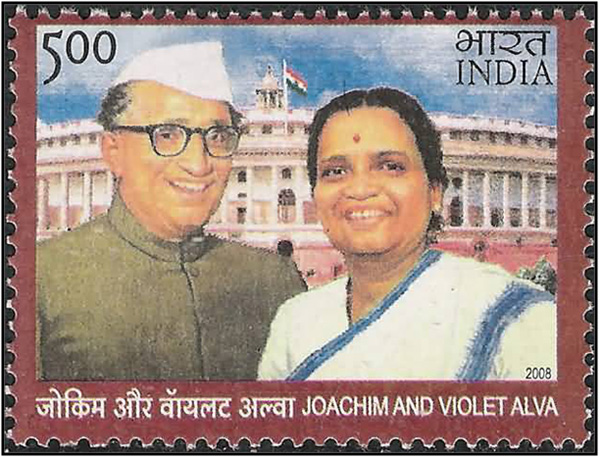
Other than Oscar Fernandes, in other cases, only a chasm between clergy and political leadership seems like the liberating force that caused the latter’s blossoming and flowering at state and national levels. While in school in Belle, I did not hear about freedom fighter Joachim Alva, one of our own and his parliamentarian wife Violet from Shirva. Our educational institutions seldom have honored laity achievers with the same zeal as those in frock, even when they rose to eminent positions in arts, entertainment, government, courts, and public service. They may have been used as channels while in positions of authority to curry favors, garner support and contributions; but having gotten what is sought after, they were forgotten. The severed the association immediately upon retirement into oblivion of such men and women. One result of this shutting out of our own eminent personalities is effective deprivation of a visible role model to youngsters. The youngsters are fed on the mistaken belief that membership of Diocesan Catholic Youth bodies will prepare them for leadership and entrepreneurships in later years. Most often, such membership produces conformist men and women, used in defending the despotic dependency of being led by men in the frock. Being a regular church goer and a good Catholic should not leave him out of the larger civic social groups and forums that espouse a thousand causes.
I emphasize on this aspect to place the expectations of the new diocese in perspective of liturgy and practice of faith. The moral and ethical foundation should be the religious beliefs and training, however, the development and harnessing of skills and talents is best left to institutions governed and run by laity. The clergy, with their vow of poverty, have no money of their own and the fountain is laity. One of the oft-repeated private grumblings against clergy has been the proverbial ‘kaam zalem, voiz melo” behavior. Lakhs of common lay people have made institutions like para-medical, medical, engineering and vocational schools possible through their generous cash donations and empowered the clergy bosses with the power to dispense management quota admissions. It does not require a saffron brigade to blow the whistle; the open secret is often the donor is at the receiving end of abuse and rejection of his ward or sponsored ward seeks to benefit from the management quota.
Hence, in correcting the neglect of the remote parishes, the common man hopes that it does not degenerate into fund-raising opportunity. Mumbai based Roshan Braganza of Udyavar origin says: Good news for the catholic Christians from Udupi. But the question is: was it needed? And will it benefit the poor? No; Things may get bit organized, but it will add extra cost and expenditure…” Asks USA based Calvin from Surathkal: “Can someone please explain the benefits of getting a new diocese and the benefits to common man?”
Would a young and penniless (to begin with) diocese in Udupi be expected to behave significantly different from the body it was carved out of and also led as a suffrage by a powerful archdiocese based in Bangalore, with a big picture of its own? I am not an optimist.
Where the church is headed?
Pope benedict XVI has called for a synod of bishops next October to deal with “The New Evangelization for the Transmission of the Christian Faith.” According to Fr. William Grimm, a catholic pastor, “the presupposition of the synod and the Year of Faith it will inaugurate is that the Church’s mission is faltering. It is indeed faltering if one’s point of reference is Europe”. I have been a personal witness to the situation last month as well as my previous travels through European cities, home to beautiful architectural marvels of Cathedrals, Basilicas, and Churches. Liturgy attendance is abysmal. These edifices are magnificent relics of a medieval history for the newly rich heretics and non-believers from Orient and West to tour, photograph and tuck into their memorabilia.
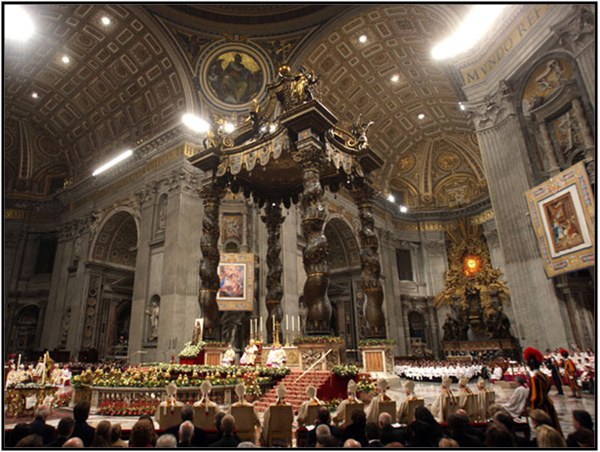
However, the Church is growing and in large measure thriving outside Europe, in Africa, Americas, Asia-Pacific and India. But Vatican will stay focused on recovering Europe. Fr. Grimm grimly adds: It is equally likely that there will be no display of humility on the part of the “head office” that would have it turn to the growing Churches in Africa, the Americas, Asia-Pacific and India to ask for advice, direction and help. Instead, there will probably be an attempt to restore old forms of liturgy, piety, theology and philosophy that were incapable of sustaining European Catholicism in the face of that continent’s history and development. There may even be attempts to impose those forms outside Europe.
That is even bleaker than my assessment on affairs of Catholic Church and its leadership. It assigns to itself all wisdom, like the Brahmin priestly class of Hinduism, leaving other Varnas to wage and fight wars, raise crops, and do the menial tasks and bring the produce to God for His greater glory and common good. Only the Brahmin knows the best. Fr. Denis Castelino, in his brilliant revolt in demanding separate diocese for Udupi district casts clergy leadership at the center of his vision of making us all fishermen in the Arabian Sea and preparing for the eventual return as refugees of the Catholic diaspora from Gulf, USA and Anglo sphere. Is the laity willing to be an obedient client clinging to total control by clergy leadership in its every aspiration? Or does it consider itself the church?
The answers, my dear readers, will direct the future of the new diocese.
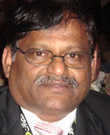
Philip Mudartha